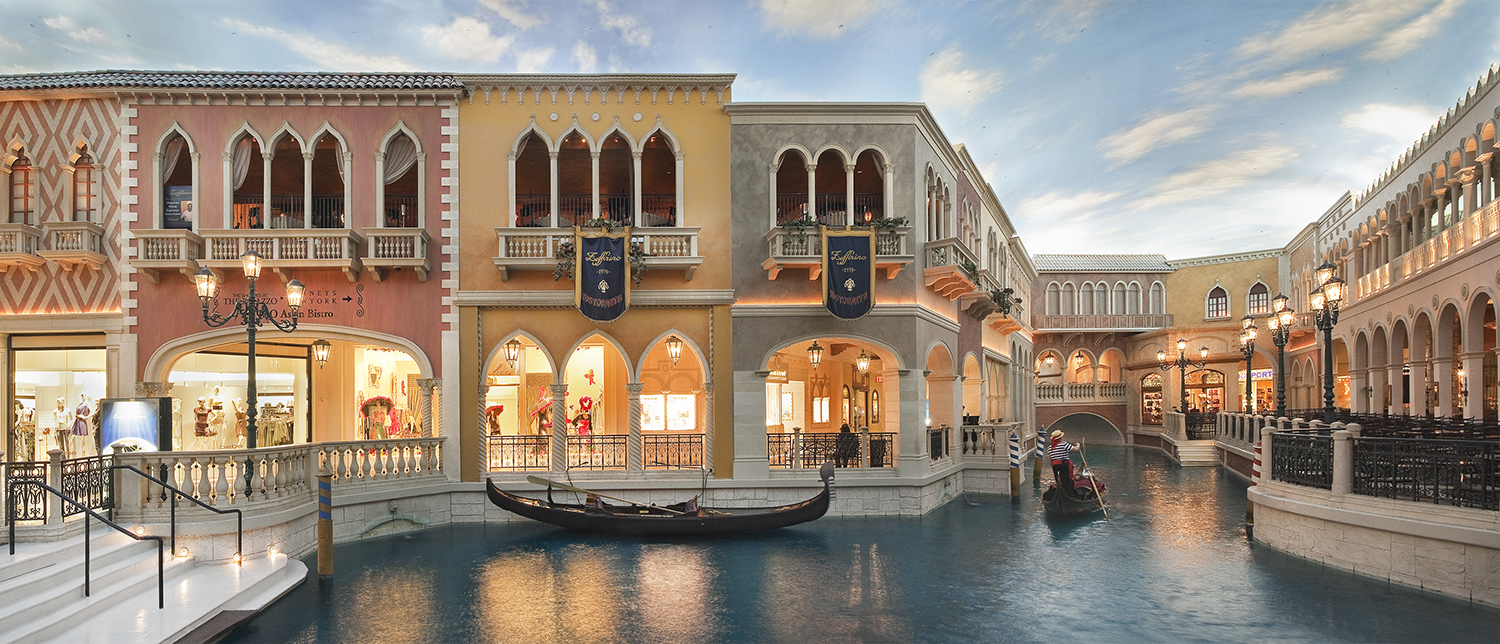by Collin Sundt
For nearly 30 years, the husband and wife photographic duo Andrea Robbins and Max Becher have investigated the cultural collisions that arise from our vast appetites for both the dislocated and the decontextualized. In their artist statement, they have described their work as documenting the “transportation of place,” a theory readily demonstrated in bodies of work that have explored the legacy of colonialist architecture in Africa, the a-contextual celebrations of Native American Culture in Germany, as well as the elaborate appropriation of New York tropes for the New York, New York casino in Las Vegas, Nevada. Throughout these works, the problems of superficial resemblance are assessed. Each location presents carefully constructed, public replicas of ostensibly authentic originals. The result of this is a curious sense of passing familiarity, a recognition of ornament or shape, but always observed with the knowledge of the replication that has taken place—a consciousness of the copy.
In Robbins and Becher’s most recent work, they have returned to Las Vegas, now photographing in and around the Venetian casino and resort, itself an elaborate reconstruction of Venice, Italy. Becher is the son of husband and wife Bernd and Hiller Becher, well-known for their photographic typologies of German vernacular and industrial architecture as well as their long teaching careers at the Kunstakademie Düsseldorf. The students of the Bechers are celebrated themselves: Andreas Gursky, Thomas Struth, Thomas Ruff, and Candida Höfer, with their influence felt throughout the flourishing of German photography in the 1990s. The depth of the similarity investigated in Robbins and Becher’s survey differs from their forebears, aligning itself more into an observational milieu perhaps more neatly inhabited by the French photographer Charles Marville, who photographed the sweeping modernization of Paris initiated by the Baron Haussmann in the late nineteenth century. Marville’s photographs capture a world in a seemingly permanent state of flux, depicting both the reassuring before and the unfamiliar after, but also the now forgotten in between. In a series of views of the construction of the avenue de l’Opéra, the ancient and its gleaming replacement vie for dominance, while in Marville’s Sky Studies, the Parisian skyline appears resolutely timeless. This was a world remaking itself, in the tradition of high-modernism, into something better; what was to replace the labyrinthine streets of medieval Paris was to not only enhance the lives of citizens, but to break with the past, abruptly and cleanly. Marville’s work attempts to navigate, a new city for a newly ensconced empire, in effect, searching to find a center in a still coalescing whole.
Robbins and Becher capture not the unreal itself, but rather its aftermath.
Venice, Las Vegas surveys a city forever reforming itself, with each iteration built upon the outsized and eye-catching. In this quest for attention is an unending desire for the new. The spectacle of the themed and carefully calibrated Disney-esque facsimile has proven to be an immensely successful tactic of choice in the development of many of Las Vegas’s renowned properties, employing the routine commercial of neutering the exotic for more cautious markets, in effect, making the foreign familiar. The intricate imitation of Venice, as captured by Robbins and Becher, is not unlike a theme park. Here, one may browse in well-crafted approximations of Venetian shops, or take a short tour in a gondola through chlorinated canals; the effortlessness with which these incredible shifts of scale are accomplished are rendered all the more striking in the desert oasis in which they have been realized, the terrific cost of it alone inspires wonder in those who venture in.
Las Vegas is a city that celebrates the contrived and the unreal, a gambit that has proven particularly profitable. The endless fantasy of luxury beneath artfully painted skies is offered at cost, with beauty and pleasure presented as commodities that may be bought and sold, both at and away from the gambling tables. These dreams are summoned amidst a hostile artifice, at the Venetian it is the dreamlike allusions to history, a picturesque vocabulary attenuated towards the most commercially driven ends. Once, travelers eagerly traversed the globe for such experiences: the improbably constructed Las Vegas offers what many would happily settle for, the means to experience the grandeur of the city without actually having to travel to it. Marketing old world charm is not a new tactic, both Venice and Vegas vie for tourist dollars, one by celebrating and preserving its rich history while the other endlessly revises and demolishes it, forever reaching toward the undefined future.
Robbins and Becher capture not the unreal itself, but rather its aftermath. The places documented in these photographs are not entirely what they purport to be, but of course, the original never entirely is. As Robbins and Becher’s work demonstrates, this wholesale exportation of place is not entirely a contemporary phenomenon, but what has changed is the scale. As the relevance of once vast transnational borders are diminished, points of origin and specificity of place become decidedly muddled and it is possible to see the ubiquitous standardized aluminum shipping container as foretelling an eradication of difference, an elimination of variety in favor of a more easily shippable uniformity. In the process of leveling geographic boundaries through trade, traditions old and new can be obliterated by overexposure, or conversely, packaged and disseminated with great ease throughout the global village. These are the consequences of convenience, a quality of life that heightens the strangeness of our now exportable world.
